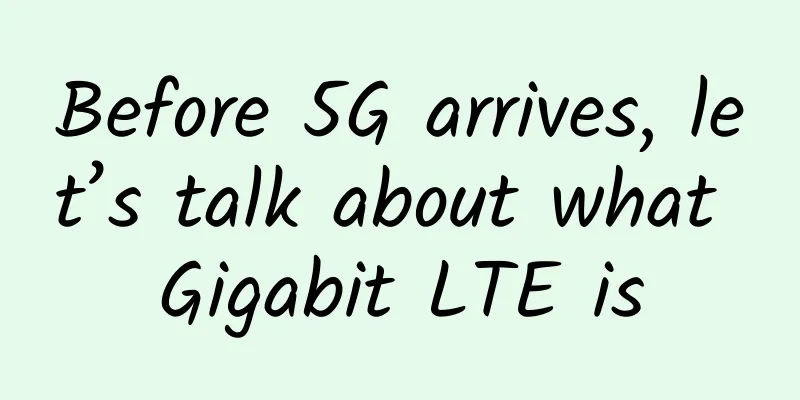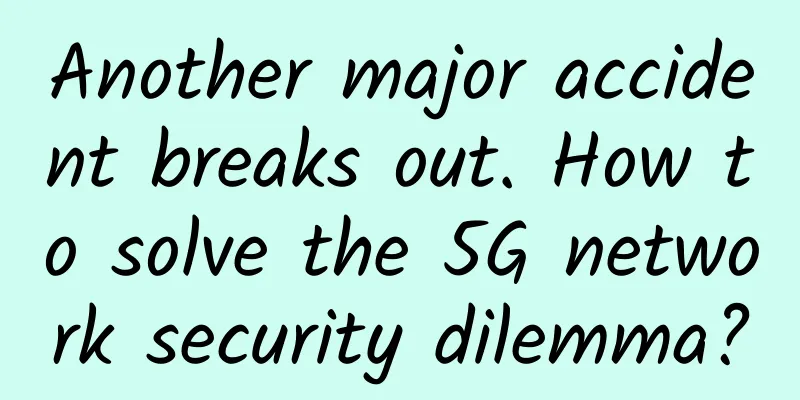Before 5G arrives, let’s talk about what Gigabit LTE is

|
In October this year, Qualcomm and Australian operators Telstra, Ericsson and NETGEAR jointly launched the mobile router MR1100 based on the first Gigabit LTE modem Snapdragon X16. According to Qualcomm's plan, the next-generation Snapdragon 835 will also integrate the Snapdragon X16. As the name implies, the theoretical speed of Gigabit LTE can reach 1Gbps at the fiber-optic level, which is consistent with the standard defined by the International Telecommunication Union for 4G. The industry calls it LTE-A. Although Gigabit LTE cannot be compared with the speed of several Gbps of 5G, Qualcomm Senior Director of Product Marketing Shen Lei believes that the former is the first step to realize the commercialization of 5G, and will coexist with 5G for a long time in the future. The principles of each generation of communication technology are similar, and the reason why Gigabit LTE can reach a speed ten times that of the first generation LTE is mainly due to three key technologies: carrier aggregation, high-order modulation, and higher-order MIMO. Carrier aggregation – increasing the number of channels In wireless networks, one of the simplest ways to increase transmission speed is to increase transmission bandwidth. With each generation of mobile communication upgrades, carrier bandwidth continues to increase. The bandwidth of a carrier in LTE is at least 20MHz (while GSM is 200KHz, WCDMA and HSPA+ are 5MHz). So how to further increase transmission speed on this basis? In the process of LTE to LTE-A evolution, 3GPP proposed carrier aggregation technology, which is to aggregate multiple carriers into a higher bandwidth. In theory, 2-5 LTE component carriers (CC) can be aggregated in the LTE-A system. Shen Lei used the Australian operator Telstra as an example. "Telstra has three licensed frequency bands, each of which is 20MHz. Through radio frequency and baseband technology, these three carriers and three frequency bands can be aggregated to achieve higher transmission speeds." How to calculate the speed after three-carrier aggregation? In simple terms, three RF channels become a wider channel, and three 20MHz channels are actually equivalent to 60MHz, which increases the data throughput by three times. In addition, because each carrier of 2×2 MIMO has two data streams, there are six data streams under the condition of three carriers. Based on the 64-QAM modulation method and the known speed of 75Mbps, the six data streams after three-carrier aggregation are equivalent to 75Mbps×6=450Mbps. Of course, this deployment method is not fixed. Each operator has different frequency bands, so the three carriers can be deployed flexibly, either continuously or discretely. For example, one 700MHz, one 900MHz, and one 1.8GHz can be aggregated; TDD carriers and FDD carriers can also be aggregated together in a mixed manner. Higher-order modulation – increasing the number of bits in the transmitted signal Carrier aggregation is the most direct and effective way to increase the rate, but the bandwidth resources of the mobile communication system are limited, and high-order modulation is a means of using limited bandwidth resources to provide high data rates. High-order modulation is a complex modulation method. For example, increasing the complexity of the transceiver can allow a signal to carry more bits. The initial downlink modulation method of LTE is 64-QAM, which is also an upgrade compared with 2G and 3G. As we all know, a signal with 64-QAM (64 samples, the more samples, the higher the transmission efficiency) can carry 6 bits. If it is expanded to 256-QAM (256 samples), a signal can carry 8 bits, and the bandwidth efficiency is directly improved by 33%. Let's calculate the speed brought by 256-QAM. One data stream is increased by 33% from 75Mbps of 64-QAM, and the final result is 100Mbps. As mentioned above, three-carrier aggregation has 6 streams. Now, through 256-QAM modulation, one data stream has 100Mbps, so after three-carrier aggregation and high-order modulation, the transmission speed can reach 600Mbps. Higher-order MIMO – increasing data flow LTE Cat.4 and above standards all require the use of MIMO (Multiple-Input Multiple-Output) technology, which means using multiple transmitting antennas and receiving antennas at the transmitting end and receiving end respectively. This allows signals to be transmitted and received through multiple antennas at the transmitting end and receiving end, greatly increasing the channel capacity. Initially, LTE used 2×2 MIMO, with two data streams. However, 2×2 still cannot reach gigabit speeds. Deploying higher-order MIMO, that is, more antennas and more transmit and receive links, to obtain more data streams is also one way to increase transmission speeds. Take Telstra's deployment as an example. It deployed 4×4 on two carriers, and the remaining carrier still used 2×2. Therefore, after using 4x4MIMO technology, the number of data streams on one carrier increased from 2 to 4. In this deployment, three carriers, two carriers with 4x4MIMO and one carrier with 2x2MIMO, have a total of 4+4+2=10 data streams. To summarize, with the support of three-carrier aggregation and 256-QAM modulation, one data stream can reach 100Mbps, and 10 data streams are equivalent to 100Mbps×10=1Gbps. Of course, data streams cannot be increased wirelessly. Shen Lei said that the current RF, baseband and processing parts of Qualcomm X16 modem have reached the limit of 10 data streams, and will develop towards 12 or even 15 data streams in the future. In addition, the best configuration for LTE is two antennas, that is, 2x2MIMO. For example, current mobile phones generally have two antennas, one at the two diagonal positions or one at the top and bottom. However, two antennas have a high threshold for mobile phone design, because mobile phones need to be thinner and thinner, while batteries, many application processors and camera modules are getting bigger and bigger, so the space left for antennas is getting smaller and smaller. The performance of a single antenna is actually decreasing. If four antennas are to be deployed, it will be a challenge for mobile phone manufacturers. At present, only the Samsung Galaxy S7/S7 Edge and Sony Xperia XZ for T-Mobile in North America have realized the four-antenna design. Although Gigabit LTE still has technical challenges, at least for now, it is a more reliable technology than 5G, isn't it? |
>>: Network construction cannot be completed overnight: VoLTE is the bright future for operators
Recommend
Fixed-line broadband rates drop again, how should operators respond?
This year marks the sixth year of the implementat...
Does Snowflake's popularity mean Hadoop is dead? What exactly is a big data system?
Any technology will go through a process from hig...
Sharktech: Los Angeles high-defense servers starting at $59/month, 1Gbps unlimited traffic
Sharing information about several high-defense se...
Byte side: Can TCP and UDP use the same port number?
Hello, everyone, I am amazing. Today I saw an int...
Huawei: 5G+AI opens a new era of smart city twins
On November 15, the "Huawei Smart City Summi...
Are there many pitfalls when porting your number? These users can't even do it
In the week since the black hole photo was releas...
80VPS: Los Angeles VPS starts at 199 yuan per year, 8C (237 IP) cluster server starts at 800 yuan per month
80VPS is a long-established Chinese hosting compa...
The Ministry of Industry and Information Technology revised the project plan for industry standards such as artificial intelligence
According to the overall arrangement for the form...
Security Talk丨How far are we from 5G?
[[267324]] Security officials from governments ar...
【WOT2018】Recommended search venue reveals the secrets and discusses how intelligent search can improve business value
[51CTO.com original article] In 2018, artificial ...
Teach you how to easily obtain local area network devices
[[430847]] Preface With the rapid development of ...
BuyVM management panel Stallion simple use tutorial
I searched the blog and it seems that no one has ...
What is 6G and when will it be launched?
Is this what comes after 5G? Since 5G networks ar...
Multi-access Edge Computing – Part 2: Security Challenges of Securing MEC
Continued from: Multi-access Edge Computing – Par...
Liu Liehong of the Ministry of Industry and Information Technology: As of October, more than 700,000 5G base stations have been put into operation
Since the issuance of 5G commercial licenses in m...









